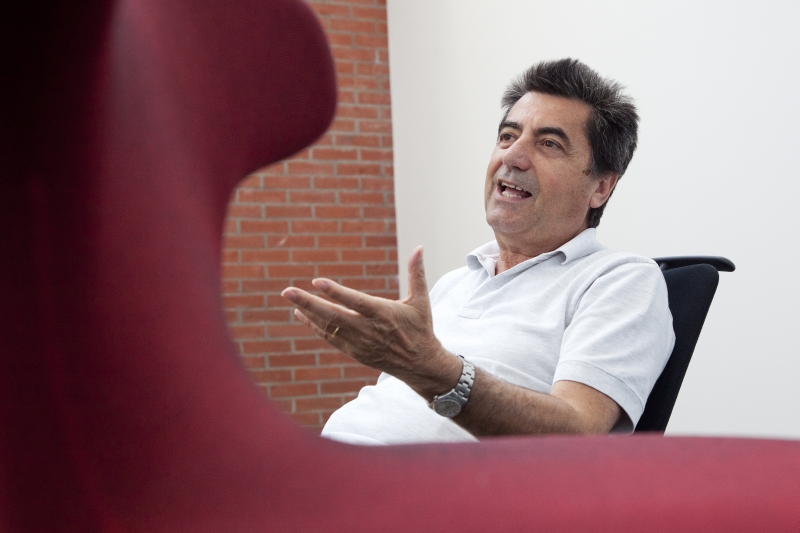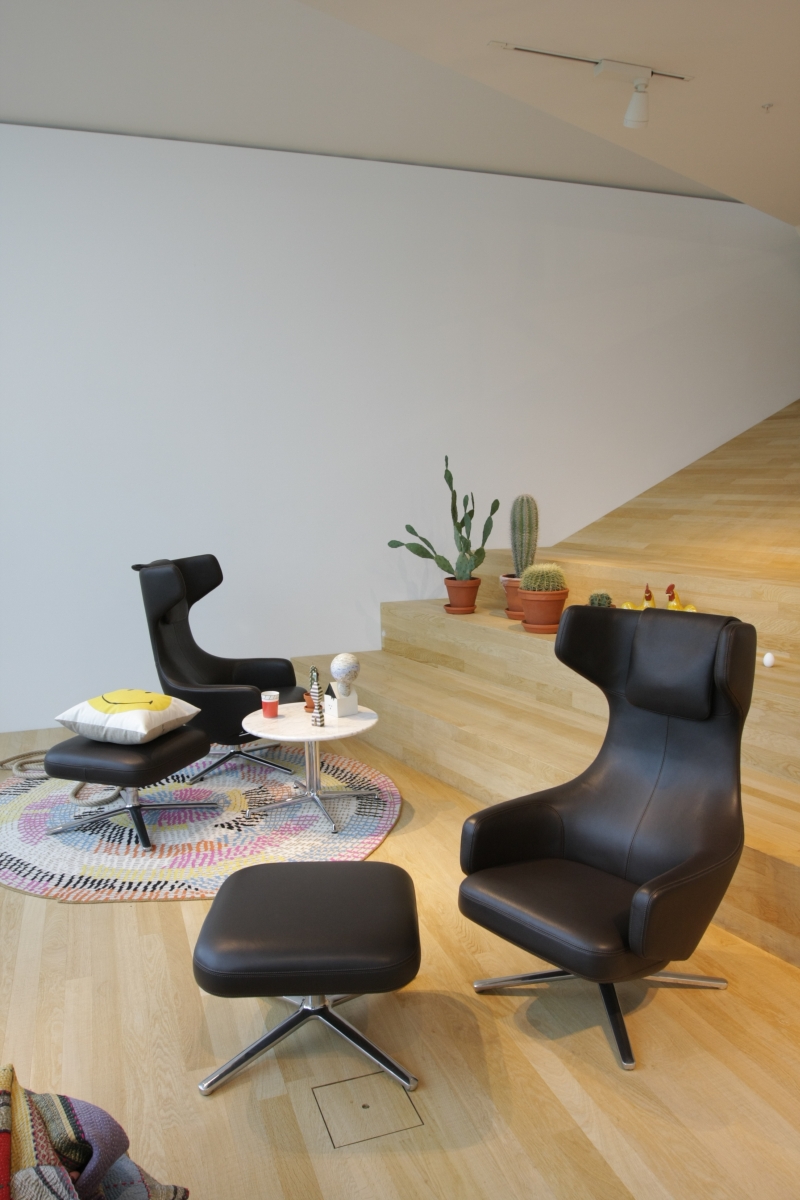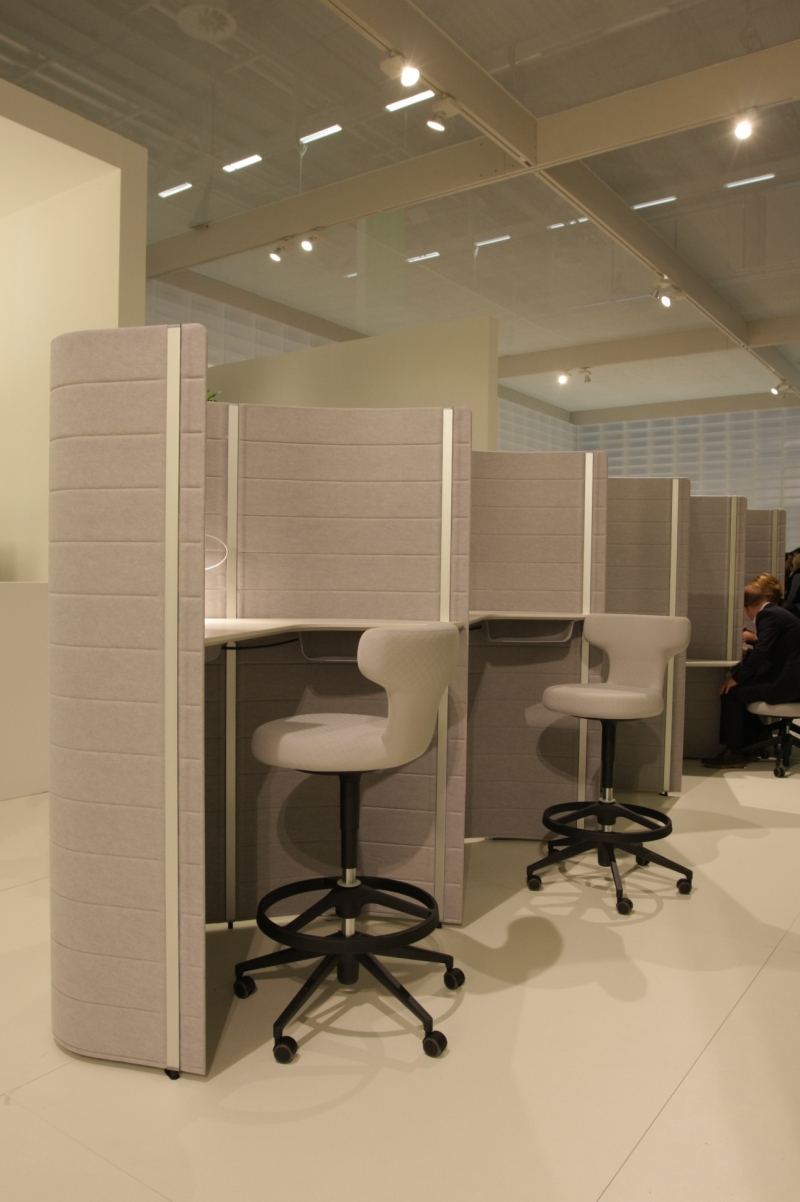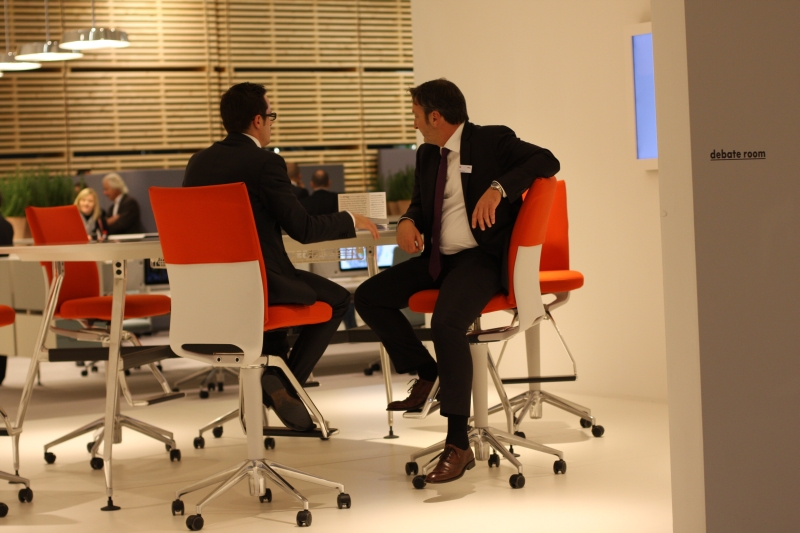In our Orgatec interview with Vitra CDO Eckart Maise we talked about the office system as the central component of the Vitra office furniture philosophy. One designer who has done more than most to establish Vitra's reputation in the office furniture sector is without question Antonio Citterio. Since his first collaborations with the company in the late 1980s Antonio Citterio has worked with Vitra on numerous key projects including the Ad Hoc system, the AC and ID office chair systems and most recently the Grand Repos lounge chair. At Orgatec 2012 Antonio Citterio and Vitra presented the latest fruits of their cooperation and we took the opportunity to speak to Antonio Citterio about working with Vitra and his admiration for Charles and Ray Eames, but started by asking about his approach to his work.
Antonio Citterio: I like to work on products that are developed over time. I don't like to work just for the moment. I like to work over long time frames and on long term concepts. My approach is to develop existing systems and to make changes every few years. For example in 2010 we presented the ID Concept Chair and this year we are presenting a new backrest for the system, and we also have some changes to Ad Hoc and a new Visavis. They are still the same products, I don't want to develop something so that the previous version becomes old or outdated. It should just be another option.
(smow)blog: Old and outdated are interesting keywords. Ad Hoc is now over 20 years old, is it still relevant in modern office environments, or has the office environment evolved quicker than Ad Hoc?
Antonio Citterio: Clearly over time the requirements of a system or a product change. The office environment is changing but a system such as Ad Hoc changes with it. For example the first Ad Hoc was very deep because it needed to take large computers and monitors, but now we don't need such a deep system for laptops, tablets etc. The system remains the same. It just evolves, and so remains practical and relevant.
(smow)blog: This evolution, or extension, of your systems, is that always purely technical or do aesthetics also play a role?
Antonio Citterio: You become boring if it is just a technical development. The technical element is an important part of the job, but the aesthetic remains a big part. It's not enough just to develop technically, it's not enough, for example, just to develop a new back for the ID Concept Chair. Everything must be considered, must fit together and not every project reaches a conclusion, sometimes you have to stop, if you don't reach a certain "something"
(smow)blog: Can one therefore say that office furniture is more interesting for you than domestic, where one has quicker turn around periods and shorter product life cycles?
Antonio Citterio: No I like to do both. Office furniture I like because of the more sophisticated technology, but then with Vitra I could combine this sophisticated technology in Grand Repos, because Vitra is a company who understand office systems.
(smow)blog: You trained as an architect and still work as an architect, do you also employ this thinking in terms of a long term evolution of systems in your architectural work?
Antonio Citterio: Yes, yes it's a very similar process. For example I have built three factories for Vitra: the first one fifteen years ago, the second one five years ago and the third one this year. All three factories are the same, just developments of the same system. They are all prefabricated, but you improve them each time and I like that. The second factory for example was built close to the first one. Now if you're a young architect you would want to create a statement. But Vitra don't need a statement, Vitra need a productive space, a Vitra factory space. In Weil am Rhein with the Vitra Campus things are different, you have a huge space and a collection of architects and there you can have a more author, expressive, work. But in order to create a creative Vitra space you must remain consistent, and so for the second factory we evolved the first factory concept. Then having developed the system in versions one and two, by the time we built the third I had a good competitive system, that can be built quickly and looks good. So yes it's a very similar process.
(smow)blog: Changing the topic slightly, you're often quoted as being a huge admirer of Charles and Ray Eames, what is the fascination for you?
Antonio Citterio: If you look at the Eames' works, their product is never finished, they were always improving and working on the designs. And this is something I can associate with, every product can be better and you should never stop trying to develop and improve a product. And Charles Eames was an incredible designer and visionary and without question one of the best from the 20th century.
(smow)blog: Which in connection with your own preference for continually developing projects over a long time frame, is that then perhaps a reason why you are so happy with Vitra, because you have the freedom to do just that, to continually improve a product?
Antonio Citterio: Certainly, yes. I've been very lucky with Vitra.
(smow)blog: Final question, we're at an office furniture fair. What does your office look like?
Antonio Citterio: I have Ad Hoc, and I will soon have the new ID Chair. At the moment we have the Axess chair plus Visavis.....
(smow)blog: ....so it's a Citterio office....
Antonio Citterio: Sure. A Citterio office in a Citterio building.



